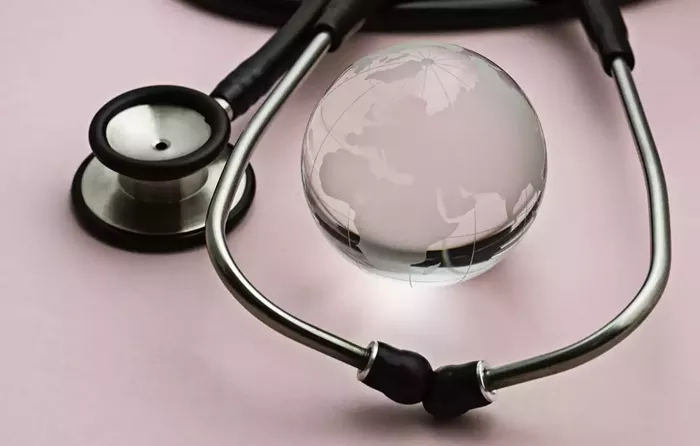LDL cholesterol stands as one of the most critical indicators of cardiovascular health that doctors measure during routine checkups. Often labeled the “bad cholesterol,” this waxy substance travels through your bloodstream in tiny particles that can silently damage arteries over time. Understanding exactly what LDL cholesterol is and how it operates in your body helps explain why medical professionals pay such close attention to it.
The Nature of LDL Cholesterol
LDL stands for low-density lipoprotein. These microscopic packages carry cholesterol through your bloodstream to areas that need it for important bodily functions. Your liver manufactures LDL particles to transport cholesterol and triglycerides to your cells.
These particles contain a fatty core. Inside each LDL particle’s protein shell sits a payload of cholesterol esters and triglycerides that can be deposited in tissues. The ratio of fat to protein makes LDL less dense than other lipoprotein particles.
LDL differs significantly from HDL. While high-density lipoprotein (HDL) removes excess cholesterol from blood vessels, LDL delivers cholesterol where it may accumulate harmfully. This fundamental difference explains their “bad” versus “good” cholesterol labels.
Particle size affects risk level. Small, dense LDL particles penetrate artery walls more easily than larger, fluffier versions. People with predominantly small LDL face higher cardiovascular risks even at similar cholesterol numbers.
LDL’s Journey Through Your Body
The liver releases LDL into circulation. After packaging cholesterol into LDL particles, your liver sends them out to deliver their cargo to cells throughout your body.
Cells signal when they need cholesterol. Special receptors on cell surfaces recognize and capture passing LDL particles when cholesterol is required for membrane maintenance or hormone production.
Excess LDL continues circulating. When cells have enough cholesterol, unclaimed LDL particles keep floating in the bloodstream where they can cause problems.
Oxidation makes LDL dangerous. Chemical changes to stray LDL particles in artery walls trigger inflammation that begins the atherosclerosis process.
How LDL Damages Arteries
LDL slips beneath artery linings. These particles penetrate the delicate endothelial layer protecting blood vessel walls, especially where turbulence or high blood pressure causes minor injuries.
White blood cells attack trapped LDL. Your immune system recognizes oxidized LDL as a threat and sends macrophages to engulf the particles, creating foam cells.
Fatty streaks form first. Collections of foam cells create the earliest visible signs of cholesterol buildup in arteries, appearing as yellow streaks.
Plaques develop over years. Continued accumulation transforms fatty streaks into raised, hardened plaques that narrow arteries and restrict blood flow.
Measuring Your LDL Levels
Blood tests quantify LDL cholesterol. After a 9-12 hour fast, a simple blood draw measures LDL in milligrams per deciliter (mg/dL) of blood.
Optimal levels stay under 100 mg/dL. Most healthy adults should aim for LDL in this range to minimize cardiovascular risks.
Near optimal ranges from 100-129 mg/dL. While not dangerous, levels in this zone may warrant lifestyle adjustments depending on other risk factors.
Borderline high falls at 130-159 mg/dL. Readings here suggest increased risk and typically call for dietary changes and increased exercise.
High levels reach 160-189 mg/dL. These numbers often require medication alongside lifestyle modifications to reduce risks.
Very high exceeds 190 mg/dL. Such elevated LDL usually indicates genetic factors and demands aggressive treatment to prevent serious complications.
What Makes LDL Levels Rise
Diet directly impacts LDL production. Eating saturated fats from red meat and full-fat dairy signals your liver to manufacture more LDL particles.
Trans fats are particularly harmful. These artificially hydrogenated oils found in fried foods and baked goods both raise LDL and lower protective HDL.
Excess weight alters cholesterol metabolism. Carrying extra pounds, especially around the abdomen, typically increases LDL while decreasing HDL.
Genetics can override lifestyle. Some people inherit genes causing their livers to overproduce LDL or their cells to remove it inefficiently.
Age gradually increases levels. Cholesterol metabolism slows with time, allowing LDL to accumulate more easily as we grow older.
Consequences of High LDL
Coronary artery disease develops silently. LDL-driven plaque buildup narrows heart arteries long before any symptoms appear.
Heart attack risk rises substantially. When unstable plaques rupture, blood clots can completely block coronary arteries.
Stroke becomes more likely. Carotid artery plaques can break loose or trigger clots that travel to the brain.
Peripheral artery disease may develop. Plaques in leg arteries reduce circulation, causing pain during walking.
Lowering LDL Effectively
Dietary changes produce significant results. Reducing saturated fat while increasing soluble fiber can lower LDL by 10-20% within weeks.
Exercise enhances LDL clearance. Regular physical activity helps your body remove LDL particles from circulation more efficiently.
Statins remain first-line medications. These drugs block cholesterol production in the liver, typically reducing LDL by 30-50%.
Other medications provide additional options. Ezetimibe, PCSK9 inhibitors, and bile acid sequestrants offer alternative approaches when statins aren’t enough.
Weight loss improves cholesterol profile. Shedding even 5-10% of body weight can significantly lower LDL levels in overweight individuals.
Conclusion
LDL cholesterol plays essential biological roles but becomes dangerous when present in excess. These particles deliver necessary cholesterol to cells but also contribute directly to atherosclerosis when they accumulate in artery walls. Understanding your LDL number provides crucial insight into your cardiovascular risk profile and guides appropriate prevention strategies. Through lifestyle modifications and medications when needed, most people can achieve and maintain healthy LDL levels that protect their long-term heart health. Regular cholesterol screening allows early intervention before silent damage becomes irreversible. While genetics influence your baseline LDL, you retain significant power to improve your numbers through diet, exercise, and medical treatment when necessary. Keeping LDL in check represents one of the most effective ways to preserve vascular health and prevent life-threatening cardiovascular events.
Related topics:
What Is LDL Cholesterol: Complete Guide
I Have High Cholesterol What Can I Eat?
What Can I Eat High Cholesterol: Health Guide


